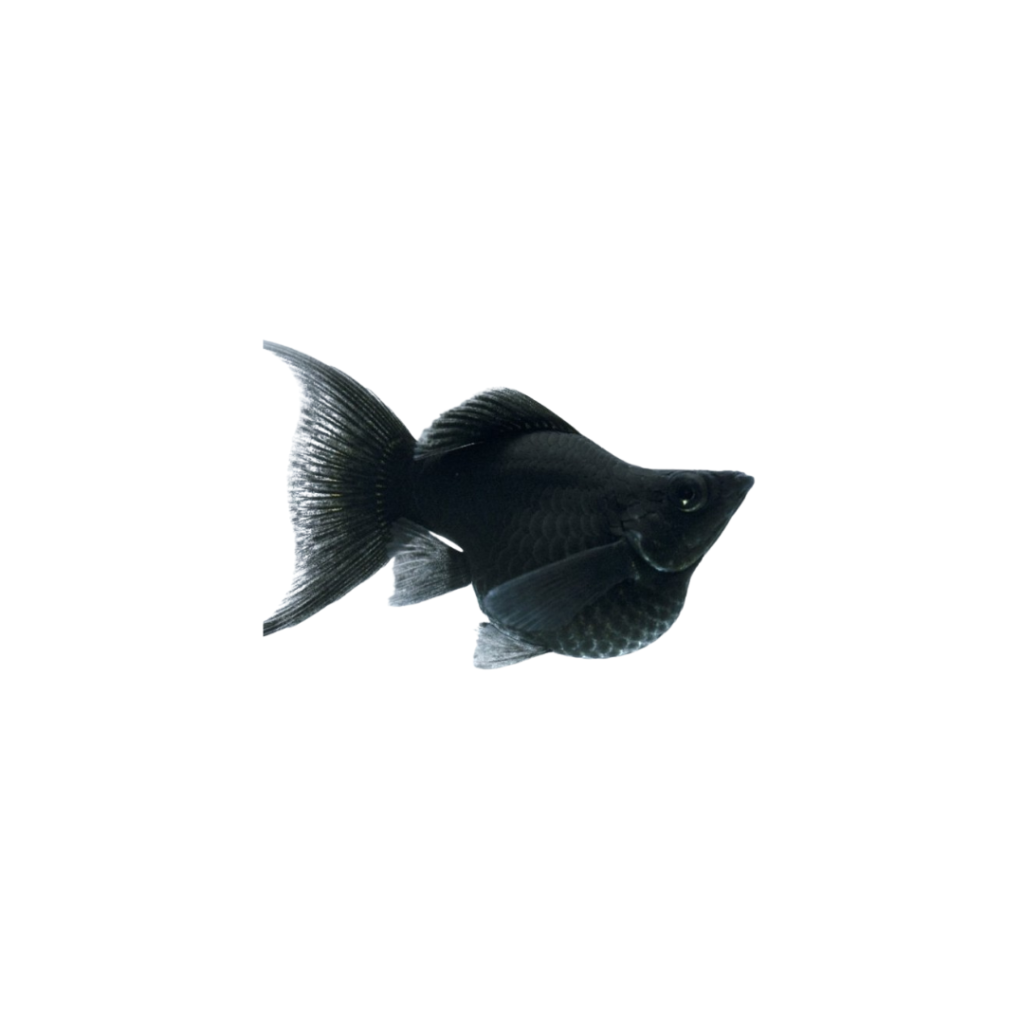Guppy AFR
Poecilia reticulata

Description
The Guppy AFR (African Guppy) is a variety of the common guppy that is known for its vibrant colors and unique body patterns. While “AFR” stands for African, it is important to note that the Guppy AFR is not native to Africa but has been selectively bred for its distinct appearance. The Guppy AFR typically has a mix of bright, neon colors, such as red, blue, orange, and green, with bold, contrasting markings on the tail and body. The tail fin often has a colorful pattern, with some guppies exhibiting beautiful, iridescent scales that shimmer under proper lighting.
Habitat Origin
Native to the freshwater rivers, lakes, and streams of Central and South America, specifically regions like Venezuela, Trinidad, and Guyana. However, the Guppy AFR is a selectively bred variety, likely created to cater to aquarists seeking unique, vibrant colorations. While not directly from Africa, it may have been named as such due to its specific breeding lines that differ from other guppy varieties.
Aquarium
Ideal Number in Aquarium: Best kept in groups of at least 4-6 individuals to ensure they feel secure and display natural behavior.
Favorite Food

Guppy AFRs are omnivores and will accept a variety of foods. They can be fed flake food, micro pellets, and live or frozen foods such as brine shrimp, daphnia, bloodworms, and grindal worms. They also enjoy vegetable-based foods like spirulina, blanched zucchini, and lettuce. A varied diet ensures they maintain their health and colorful appearance.
Behavior:
The Guppy AFR is a peaceful, active species. They are typically seen swimming in the middle and upper regions of the tank, where they enjoy darting about and interacting with other guppies. Guppies are social and non-aggressive, so it’s best to keep them in groups where they can interact with each other. During breeding seasons, males may show more territorial behavior around females, but overall, their aggression is minimal compared to other species.
Special Care:
Guppy AFRs are hardy fish that adapt well to different water conditions but thrive in stable, clean water. Regular water changes, good filtration, and maintaining water parameters within the ideal range are necessary for their well-being. As livebearers, they will breed in community tanks if males and females are kept together. If breeding is not desired, it’s best to keep only males or separate them from the females.
Compatibility with Other Fish:
Guppy AFRs are compatible with a wide variety of peaceful fish species. They can be housed with other guppy varieties, tetras, rasboras, gouramis, and Corydoras catfish. They should be avoided in tanks with larger or more aggressive fish, such as bettas, cichlids, or goldfish, which may bully or eat the guppies.
Breeding Tank Setup
Although not absolutely necessary, using a separate breeding tank for Guppy AFR is highly recommended. A 20–40 liter (5–10 gallon) tank offers enough space for both breeding adults and growing fry, while also ensuring that water conditions remain ideal and fry are protected from potential predators. Water parameters should be stable, with a pH of 7.0–8.0, a temperature range of 24–28°C, and moderate hardness of 6–12 dGH. Use a sponge filter or low-flow internal filter for gentle filtration. A sandy or fine gravel substrate with live plants such as Java moss and floating greenery helps reduce stress and provides hiding places for fry.
Conditioning for Breeding
To prepare Guppy AFR for breeding, a rich and diverse diet is key. Feed high-protein foods like live or frozen brine shrimp, bloodworms, and daphnia, along with quality guppy flakes or pellets. This diet boosts fertility and encourages courtship behavior. Routine weekly water changes of 20–30% help keep the tank clean and stimulate spawning readiness. Raising the water temperature slightly to 28°C can also encourage mating activity.
Spawning Process
Spawning typically begins once both fish are well-conditioned and the water parameters are stable. The male displays his colors and chases the female to court her. Being livebearers, the female carries fertilized eggs internally and gives birth to fully formed fry after 4–6 weeks. A single birthing can result in 20 to 100 fry, depending on the female’s age and health. While separation after birth is optional, moving the female can improve fry survival by reducing the risk of predation.
Fry Care & Feeding
Guppy AFR fry are born free-swimming and should be fed infusoria, liquid fry food, or finely crushed flake food in the first few days. After about a week, transition to newly hatched brine shrimp or finely crushed pellets. Maintain optimal conditions by performing 10–15% water changes every 2–3 days and keeping water temperature consistent within 24–28°C. A sponge filter ensures safe, gentle filtration, and dense plant cover offers essential protection from stress and potential predators.
Maturity, Sexing & Stress Management
Guppy AFR reach breeding maturity at around 3–4 months old. Males are smaller, more vividly colored, and feature a gonopodium (modified anal fin), while females are rounder, larger, and more subdued in coloration. To promote successful breeding, avoid overcrowding and abrupt water changes. Remove aggressive tankmates to reduce stress, and maintain stable parameters. Shaded areas from floating plants can also help females feel secure, especially during late pregnancy.
